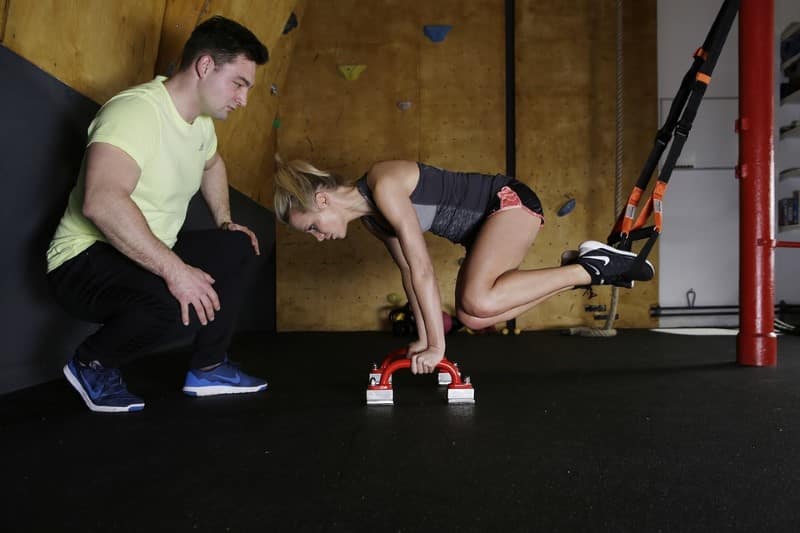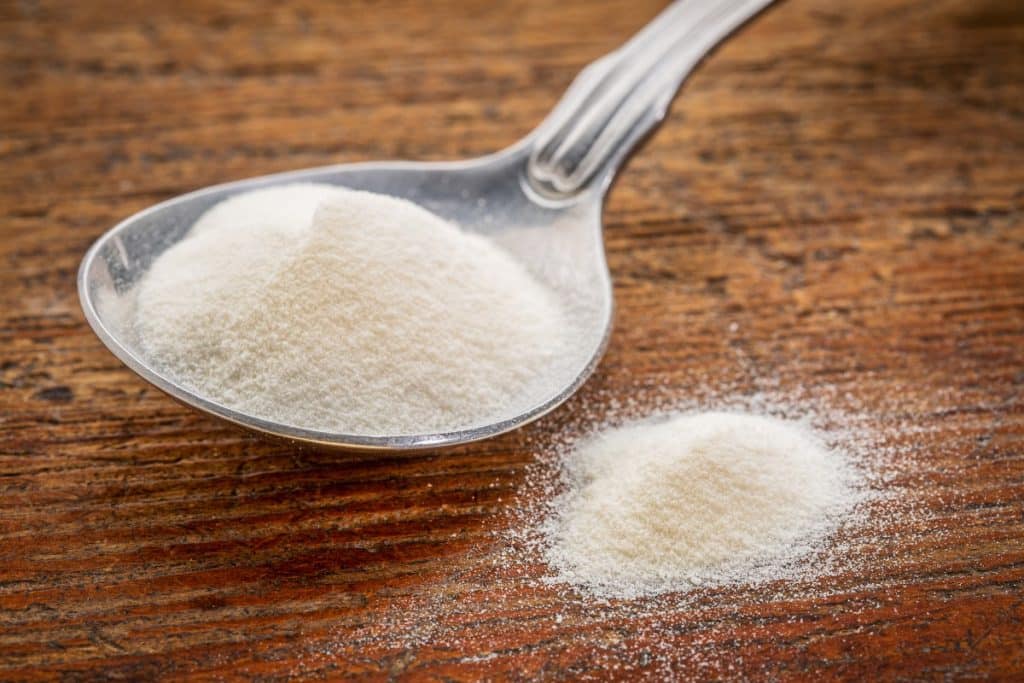Loose Skin From Keto Diet
Many people who lose weight successfully struggle with loose skin once they reach their goal weight.
Indeed, it can be extremely frustrating to be doing everything right, to see the weight melt off, and to still not be happy with the way you look because of the sagging, loose skin.
What are the different options to deal with that problem?
Let's find out.
What Causes Loose Skin?
Loose skin after weight loss is a common problem for many people, even sometimes for those who have lost only a couple of pounds.
Let's see what the main contributing factors are:

#1. Losing lots of weight
People who have lost lots of weight at once struggle with loose skin much more often. However, it could also affect folks who have lost only a moderate amount of fat.
#2. Having carried excessive weight for long periods of time
If you were overweight for a long period of time, your skin is more stretched and may be slower to recover after losing the unwanted fat. That's why it's important to not postpone weight loss efforts indefinitely.
"I'll start next month" is not a great beginning, especially if you know that next month you might get discouraged again and postpone for another date in the future.
Drop the excuses and start your journey now, for the sake of your skin and, even more importantly, your health.
When you're overweight for a long time, your skin has stayed expanded throughout that time and will, therefore, need more time to retract.
If the skin has needed to expand quickly over a short period of time, for example during pregnancy, it'll be quicker to regain its usual appearance.
Nevertheless, if you have been overweight for years, this shouldn't discourage you – with the right approach, you can achieve very good results. The sooner you begin, the better.
#3. Losing weight too quickly
Losing weight at a very rapid rate gives less time to the skin to shrink back and recover its original elasticity.
That's why the best approach is to have a sustainable diet where you lose a pound or two a week. Avoid drastic diets that have you drop lots of weight within a very short period of time.
Besides being prone to having more loose skin after dieting too aggressively, a diet that has you starving might help you drop the weight fast, but after that, it'll be a lot harder to keep it off, since your hunger will be more ravenous than ever, and you also risk losing muscle mass.
For the sake of your skin, muscles, and sanity, opt for sensible and sustainable diets, such as the ketogenic diet.
Related: What to Expect from Your Weight Loss Journey on Keto
#4. Age
Age is another important factor. If you're young, your skin will react to change more readily. However, the older you get, the less elastic your skin is.
There isn't that much you can do about that, except for getting started as soon as possible and not letting excuses derail you.
The skin has amazing regenerative capacities even at a later age, although things will be slower. Give it time and do some sort of resistance training to "fill in" some of the space that fat will leave empty, this time in a much more harmonious manner.
#5. Genetics
Genetics could also play a role. Some people are simply more susceptible to sagging skin.
#6. Sun exposure
We know that moderate sun exposure is actually beneficial for many things. It helps regulate your circadian rhythm, makes you less prone to depression, and boosts your vitamin D levels (1, 2).
Nevertheless, if you're spending excessive amounts of time in the sun unprotected, it makes your skin age faster, which could be a contributing factor to a worsened skin elasticity. Plus, it makes you more susceptible to developing certain types of skin cancer (3).
#7. Smoking
If you need yet another reason to stop smoking, here it is: a smokers' facial skin ages prematurely, and they're much more prone to having sagging skin on the face and the body (4) .
If you're aiming to take control of your health, stopping smoking is one of the best things you could do (together with losing excessive weight).
What Should You Do To Improve Your Skin Appearance?
There are surgical and non-surgical methods to deal with loose skin, and each has its advantages and limitations.
The first 6 methods below are probably the best ways to tighten the skin on your stomach, arms and thighs after weight loss or pregnancy naturally without surgery.
#1. Get rid of the stubborn fat
In order to accurately assess how much loose skin you have, you first need to lose most of the fat that you can realistically lose.
Ideally, for women, that would get you to around 20% body fat, while for men, the percentage is lower, around 10%. Women naturally carry more body fat and dropping under 20% for them is not only unnecessary but also potentially unhealthy (5).
Chances are that by leaning out and giving your skin enough time, the problem will start resolving itself naturally, without the need of other major interventions. Easier said than done, we know!
But consider this: under the annoying sagging skin, you might still have fat to lose. If you pinch it and it isn't just a few millimeters thick, then it isn't only skin. Unfortunately, some fat deposits are more stubborn than others and you cannot really spot reduce, so the solution is to just keep going.
In order to be successful with your diet, you shouldn't see it as some sort of temporary solution or a quick fix.
If you just follow a diet for two to three months and then go back to eating what you were eating before, you risk regaining the weight and stretching your skin again. Instead, use the momentum of your current motivation to create healthy habits that will stick for life.
Related: How to Follow The Keto Diet for Weight Loss
#2. Give yourself time
Sagging skin needs time to recover from being stretched over long periods of time. Be patient and consistent with your diet, and the appearance of your skin will naturally start improving.
Depending on other factors (age, genetics, the amount of fat loss), this will be a faster or a slower process.
Additionally, choose a sustainable diet where you lose weight at a slow to a moderate pace. This will allow your skin enough time to catch up.
Extreme diets where you lose lots of weight at once are a bad idea in general. You risk losing lots of muscle mass together with the fat, and they'll usually leave you starving and more prone to overeating and gaining the weight back after you're done.
Plus, your skin will look worse if you lose weight too quickly. Aim for a moderate deficit and eat enough protein, and your body – and your skin – will thank you for it.

#3. Do some sort of resistance training
Resistance training helps you preserve your lean body mass and also gain some muscle. Plus, muscle looks good, especially if you're struggling with excess skin.
Resistance training will help you fill some of the voids after the fat is gone, and will certainly look much better than fat. We're naturally attracted to strong, healthy individuals, which is why some muscle is almost universally seen as sexy and good looking.
If you have very little muscle, you risk looking "skinny fat" even after losing most of the weight you were aiming to lose.
Ladies, don't be afraid to put on some muscle. You won't get "bulky" if you lift weights (unless you really want it and put years of hard work and dedication into it). Instead, you'll get fit and you'll look and feel healthy and confident.
Resistance training can be weight lifting or even just body weight exercises that you do at home. You don't need to lose the weight before you start with resistance training. Instead, it's best to do both of these things for the best results.
#4. Eat enough protein
Eating enough protein is essential for many reasons. For example, it helps your skin recover after weight loss, providing it with the building blocks necessary for it to rebuild itself.
#5. Supplement with collagen (gelatine) and fish oil
Supplementing with collagen could help your body produce more collagen, which is directly related to the elasticity of your skin.
Gelatine and collagen are nearly the same thing, so you could also eat gelatine-rich foods, such as bone broth, skin, cartilage, etc.

For a list of recommended collagen supplements, visit this page!
Fish oil might also improve the skin's elasticity and appearance (6).
For a list of best fish oil products to choose, check it here!
#6. Wear compression clothing
While compression clothing will likely not affect your skin directly, it will help you feel more comfortable and confident in your clothes. It will help you prevent rubbing and chaffing, and will minimize infection caused by these two things.
You can use compression clothing during sports, and also wear compression underwear or tights for other occasions or even every day.
#7. Get Plenty of Vitamin C (From Whole Foods)
Vitamin C has antioxidant abilities in the body that are especially beneficial for skin health. It has been shown to protect against UV-induced skin damage. It also aids in the production of collagen, which is needed to keep skin youthful and firm (7).
Make sure you get your vitamin C from whole foods and not synthetic blends. Your body will absorb these better. Eating a wide variety of fruits and vegetables will provide you with an array of antioxidant properties that boost skin.
Here are some good sources to focus on:
- Spinach
- Kale
- Berries
- Broccoli
- Tomatoes
- Mushrooms
- Bell peppers
- Cauliflower
#8. Consider surgery
In some cases, if you have lots of loose skin, and especially if you have lost a big amount of weight, surgery might be the most appropriate course of action.
Depending on the area you want to tighten, there are different procedures available:
- Tummy tuck – removes excess skin from your abdomen
- Lower body lift – removes loose skin from the belly, butt, thighs, and hips
- Upper body lift – removes excess skin from back and breasts
- Arm lift – removes excess skin from the upper arms.
These all fall under the same category of body contouring surgery.
Surgery is, of course, more expensive than other ways of dealing with loose skin, and should be the last step.
You should consider surgery only after you have lost most of the excess fat and maintained your weight successfully for a long period of time.
If you want to undergo surgery, you need to make sure that you won't be regaining the weight back, and that you're committed to a healthy lifestyle.
Some insurance plans might cover skin removal surgery in the cases when it's a medical necessity. For example, when excess skin provokes infections and rashes, so make sure you check that with your health insurance company.
The procedure itself will require a short stay in the hospital, usually from 1 to a maximum of 4 days, and some additional recovery at home.
Our Conclusion
Loose, sagging skin is an unfortunate side effect of losing lots of weight. However, if you give it enough time and are consistent with your diet and exercise routine, it will start to recover and tighten.
This is, of course, a slow process, so you need to give it time and be patient. Eating enough protein, staying hydrated and doing some resistance training might be particularly helpful.
Sometimes surgical intervention might be useful, especially if excess skin causes discomfort or is prone to chafing and tearing. This should be done only after you're sure that your weight has stabilized and that you can commit to a healthy lifestyle in the long run.
However you decide to deal with loose skin, remember one thing: losing excess fat is much more important for your health than a bit of sagging skin, and you'll feel much better once you lose the extra pounds.
Enjoy this post? Share to save for later!

Photo credit: wckiw & Voyagerix/ depositphotos.com
Source: https://www.ketovale.com/how-to-tighten-loose-skin/